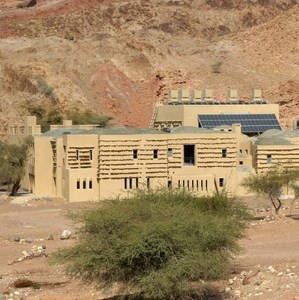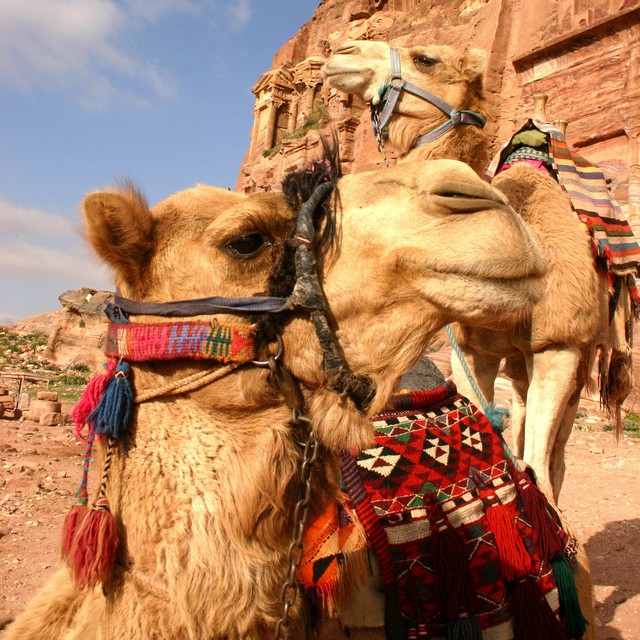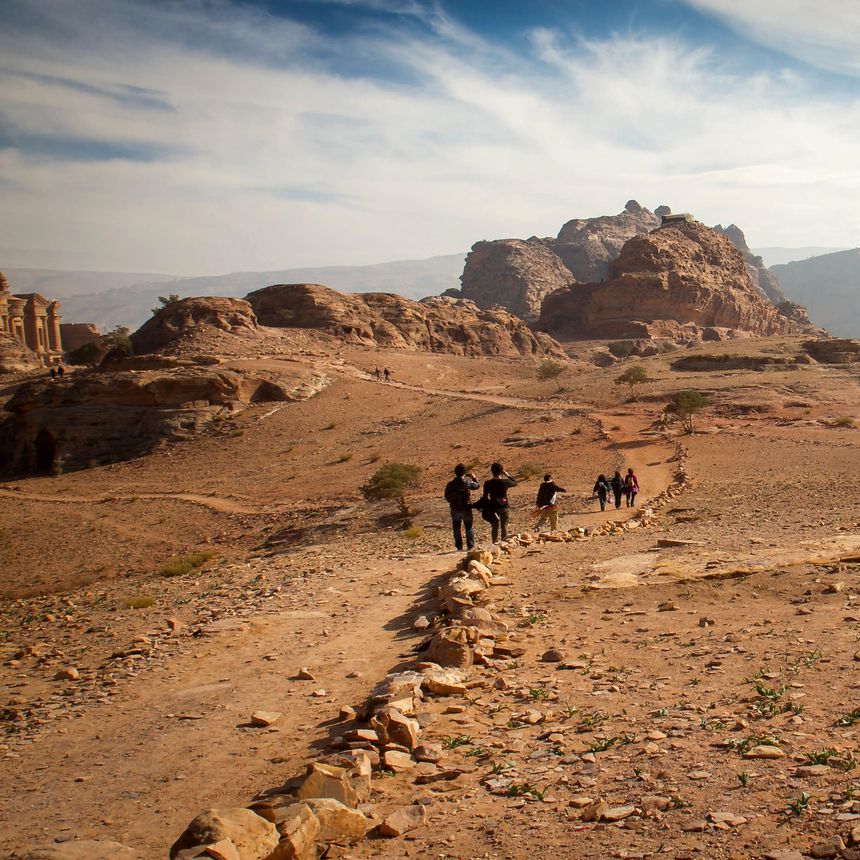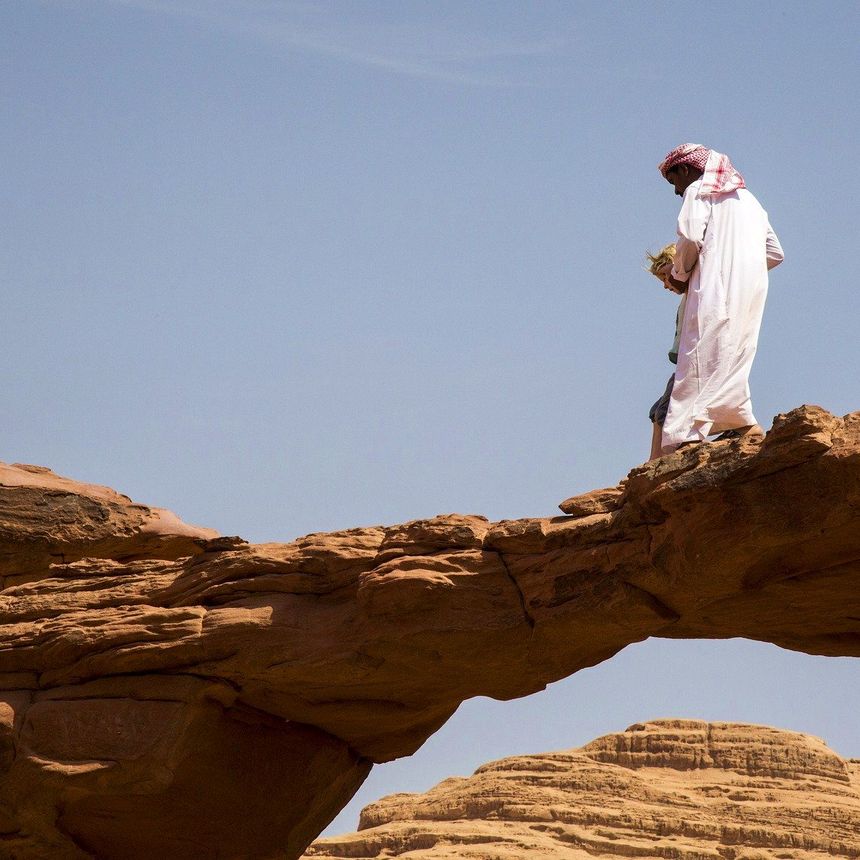Transfer from Little Petra to Petra via the "back door" hike. Overnight in Petra.
Overnight in Petra Moon Hotel, Petra
Meal plan: Breakfast
This 3-4 hour walking track from Little Petra to Petra goes down the Wadi Ghurab, surrounded by sandstone mountains which guard the entrance of Petra. This trial follows a Nabataean route out of the valley and skirts around the final mountain on a natural rock terrace, which has been improved by the PAP for the safety of walkers. Even so, it narrows slightly before reaching a hidden plateau high above the impressive chasm of Wadi Siyyagh. Just beyond, carved into the cliff face, ‘The Monastery’ suddenly comes into view. Nabataean steps then lead down into ancient Petra, past ‘The Treasury’, and through the famous ‘Petra Siq’ to the shops, cafés and hotels of Wadi Musa.
Petra is one of the world's greatest heritage sites and one of the world's seven New Wonders - an ancient rock city that was the capital of the Nabatean Kingdom. Built around 2,300 years ago, the imposing rose-stone palaces are an impressive testament to the power and influence of the Nabateans who controlled trade around the area in the 3rd century BC. Petra is surrounded by hills in which tombs have been carved into the pink sandstone. The site includes some 800 structures.
Better known as Little Petra, Al-Beidha is a historical suburb of the city of Petra. To reach it, you enter a 350 metre long gorge known as ‘Siq-al-Barid’, and popularly referred to as ‘cold siq’ because its high walls block out the sunlight. Little Petra is thought to have functioned as the entry point for Petra’s North and West trade-routes in ancient times, and housed the Caravans from Negev, Gaza, Jerusalem, Egypt and the Mediterranean Coast. Like in Petra, the buildings are carved into the sandstone, and are compromised of residences, storage areas and tombs. A spectacular tomb houses a painted fresco of grapes, birds and flowers, dating to the 1st century AD. Take in its picturesque surroundings and countryside and bask in its stillness and atmosphere, which has largely disappeared from the park’s more frequented central areas.










